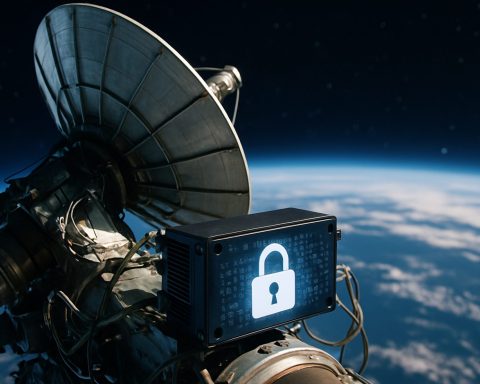- SpaceX, United Launch Alliance (ULA), and Blue Origin are key players in U.S. Space Force contracts, indicating a strategic division of space defense responsibilities.
- SpaceX leads with 28 missions valued at $5.9 billion, highlighting its dominance with the Falcon 9 and Falcon Heavy rockets.
- ULA secures 19 missions for $5.4 billion, emphasizing its significant role in military space operations.
- Blue Origin enters the fray with seven missions, signaling its potential emergence in the aerospace industry despite higher launch costs of $341 million on average.
- Contracts include mission-specific services beyond launches, underscoring the importance of speed, adaptability, and reliability in space defense.
- The Pentagon’s inclusion of “mission acceleration” clauses highlights the necessity for quick adaptability in space-related military operations.
- These contracts reflect the growing importance of assured access to space and innovative advancements in aerospace technology.
Amidst the cosmos’ ever-expanding canvas, three aerospace giants are shaping the future of military space operations. SpaceX, United Launch Alliance (ULA), and Blue Origin have secured lucrative contracts from the U.S. Space Force—a modern celestial contest with SpaceX taking the lion’s share, not by chance, but by design.
SpaceX will handle 28 missions with a contract valued at approximately $5.9 billion, while ULA is tasked with 19 missions for around $5.4 billion. Blue Origin, the new kid on the block, breaks into this elite duo with seven missions, marking a significant step into uncharted territory. This allocation reflects a strategic 60-40 split between SpaceX and ULA. But numbers only tell half the tale.
Behind the price tags—around $212 million per launch for SpaceX and $282 million for ULA—are intricate layers of customized services. The contracts with these companies cover not only lift-offs but also mission-specific nuances like fleet surveillance and quick anomaly resolutions, ensuring every launch adapts to the evolving needs of space defense.
Blue Origin’s debut in this arena suggests change is on the horizon. Its seven missions come with a hefty $341 million average per launch estimate, underscoring the premium on precision and reliability. Although their New Glenn rocket is yet to roar across the skies, the anticipation is as palpable as the rockets igniting from Cape Canaveral.
The dazzling jewel in SpaceX’s crown is its reliable fleet of Falcon 9 and Falcon Heavy rockets. With 140 launches under their belt in the past year alone, these machines are testament to SpaceX’s dominance. Elon Musk, with his usual candor, pointed out the harsh reality: while competitors nibble at the market’s edges, they simply “aren’t there yet.”
These gargantuan contracts highlight more than just the financial stakes—they encapsulate a vision of assured access to space. The Pentagon includes clauses for “mission acceleration” and “special studies,” accentuating how crucial adaptability and speed are in modern warfare readiness.
The celestial sphere remains an untapped frontier ripe with potential. For SpaceX, ULA, and now Blue Origin, each launch adds a brushstroke to this vast cosmic mural. And as these titans of industry hone their crafts, the Space Force stands ready to reap the benefits of not just mastery over the skies but of the space beyond.
As the countdown ticks onward, the takeaway is this: In this cosmic ballet, agility, reliability, and innovation propel these companies on their interstellar journeys—charting new courses through space’s unending expanse. The sky, it seems, is no longer the limit.
A Compelling Race to Space: Unveiling the Future of Military Space Operations
A New Dawn in Military Space Endeavors
In the burgeoning arena of military space operations, SpaceX, United Launch Alliance (ULA), and Blue Origin stand as significant players, following recent contract allocations from the U.S. Space Force. While SpaceX leads with 28 missions worth approximately $5.9 billion, followed by ULA’s 19 missions for $5.4 billion, and Blue Origin’s seven missions marking their ambitious debut, this cosmic race involves more than meets the eye.
How-To Maximize Contract Value in Aerospace
Steps for Space Companies:
1. Build a Reliable Fleet: Develop a track record with a reliable launch vehicle, as SpaceX did with Falcon 9 and Falcon Heavy.
2. Offer Comprehensive Services: Beyond launches, provide solutions for fleet surveillance, anomaly resolutions, and mission-specific customizations.
3. Innovate Continuously: Stay ahead with R&D to refine technology and reduce costs, which plays a crucial role in competitive bidding.
Real-World Use Cases and Market Trends
– SpaceX’s Dominance: Known for its reliability and lower cost per launch, SpaceX has proven advantageous for military needs by offering flexibility and quick turnaround times.
– ULA’s Strengths: Despite higher costs, ULA’s proven track record and legacy relationships provide assurance in sensitive missions needing high precision.
– Blue Origin’s Strategy: Though new, they leverage their technical expertise in developing the New Glenn rocket, emphasizing reliability and high payload capabilities.
Reviews & Comparisons
– SpaceX vs. ULA: While SpaceX provides cost-effective solutions, ULA offers established reliability, especially critical for defense agencies.
– Blue Origin’s Potential: Although still pending its inaugural launch, Blue Origin is watched closely for its innovative potential and Bezos-led financial backing.
Industry Controversies & Limitations
– Regulatory Challenges: Office of Space Commerce regulations could affect launch scheduling and pricing.
– Environmental Concerns: The environmental impact of frequent launches is becoming a growing point of contention among policymakers.
– Technology Risks: The risk of technical failure remains a concern, especially for new entrants like Blue Origin.
Key Features & Pricing
– SpaceX Launch Price: Approximately $212 million per launch, capitalizing on reuse and lower costs.
– ULA Pricing & Premiums: About $282 million per launch with high costs justified by precision and reliability.
– Blue Origin’s Cost: Estimated $341 million per launch, pending further market presence to verify sustainability.
Security & Sustainability Aspects
– Security protocols in military launches are stringent, involving encrypted communication, secure transport, and compartmentalized mission aspects to ensure data integrity.
– Sustainability remains a focal point, with SpaceX and others experimenting with reusable rockets to minimize space debris and reduce environmental footprints.
Insights & Predictions
– As the space economy grows, expect increased private-public partnerships, pushing technology limits, and lowering costs.
– With more companies entering the fray, the competitive landscape will likely see partnerships and collaborations across the industry.
Quick Tips for Emerging Aerospace Companies
1. Focus on Reusability: Reducing costs via reusable technology is crucial for long-term competitiveness.
2. Strengthen Cybersecurity: Robust security frameworks are mandatory when dealing with defense and government missions.
3. Engage in Collaboration: Leverage partnerships for shared research and technology breakthroughs.
For more insights into the current state of aerospace and ongoing space exploration initiatives, visit SpaceX, ULA, and Blue Origin.
As aerospace giants chart their paths and ink new chapters in the cosmic canvas, the only certainty is that the sky is no longer the limit. With agility, innovation, and strategic insight, they redefine what is possible beyond Earth’s horizon.







